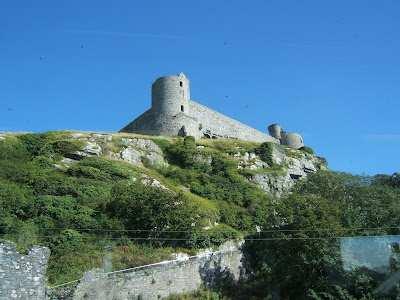Today is St Patrick's Day; Lá Fhéile Pádraig. I've not yet had the opportunity to visit Ireland, but didn't want to allow the occasion to slide by unmarked, so a few facts St Patrick!
Saint Patrick is widely recognised as the patron saint of Ireland, and his day is a public holiday on both sides of the border, in addition to being celebrated by Irish communities around the world.
Born in Kilpatrick, Scotland around 387AD, Patrick was son to a Roman couple in charge of the colony. He is believed to have been kidnapped at age around 16 and taken to Ireland as a slave. He lived there in captivity for around 4 years, during which time he learned the language and customs of the people; but also began to explore the Christian faith. He eventually escaped, boarded a ship back to Britain and then travelled on to Gaul (France) where he studied to be a priest. In 432, he returned to Ireland as a bishop, with the intention of bringing Christianity to the populace. He died on 17th March 461 and is believed to have been buried in Downpatrick.
His day is celebrated with parades and festivities. The predominant colour is green and the shamrock is worn in memory of the legend that St Patrick used it as a visual aid to help explain the concept of the Trinity; God in three persons, but nevertheless one God.
To end, I have pinched a copy of his prayer from a friends blog (EdenhouseUpdate):
St Patricks Day Prayer
Christ be with me, Christ within me,
Christ behind me, Christ before me,
Christ beside me, Christ to win me,
Christ to comfort and restore me
Christ beneath me, Christ above me,
Christ in quiet, and in danger,
Christ in hearts of all that love me,
Christ in mouth of friend and stranger.
Beannachtaí na Féile Pádraig



















































